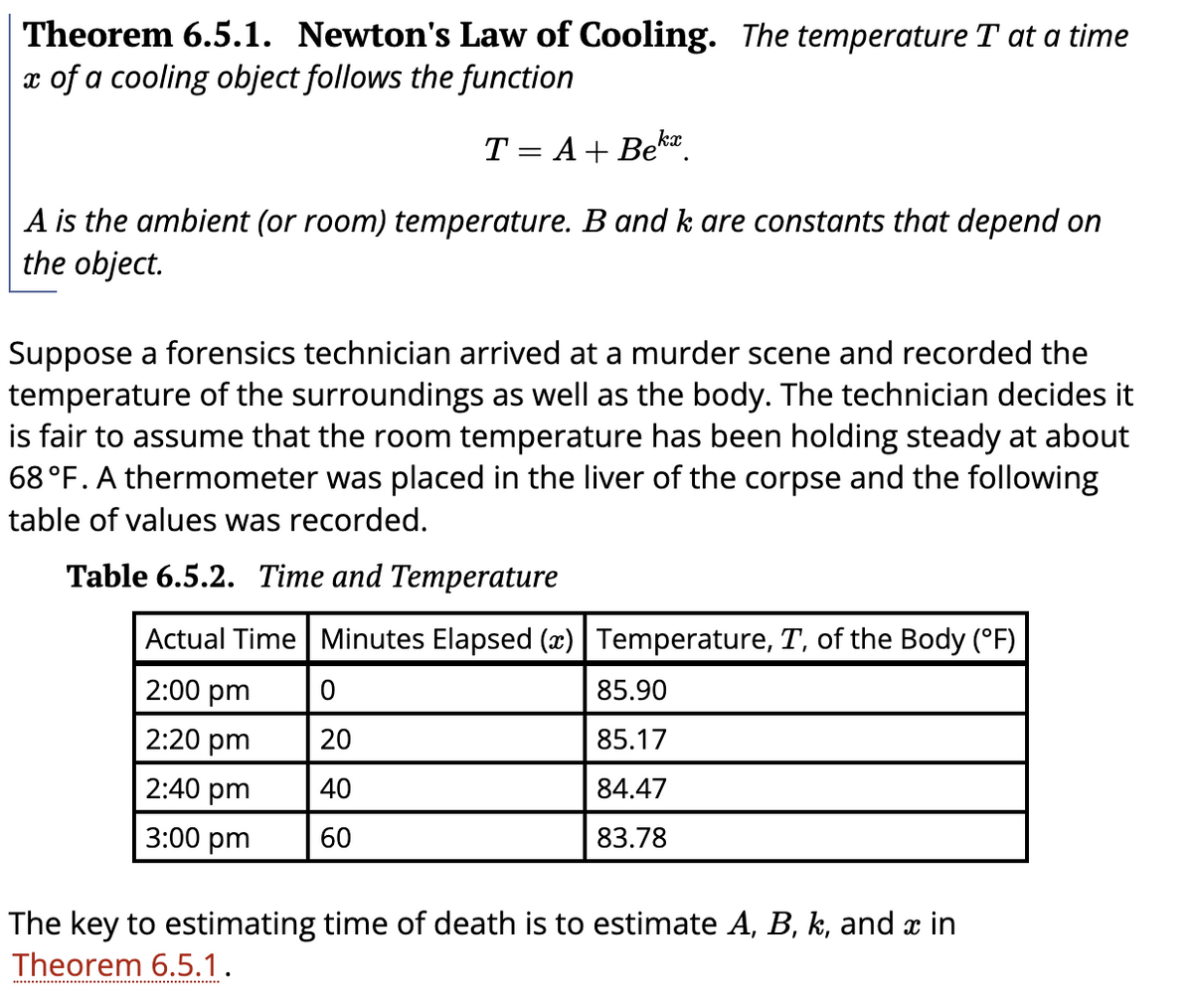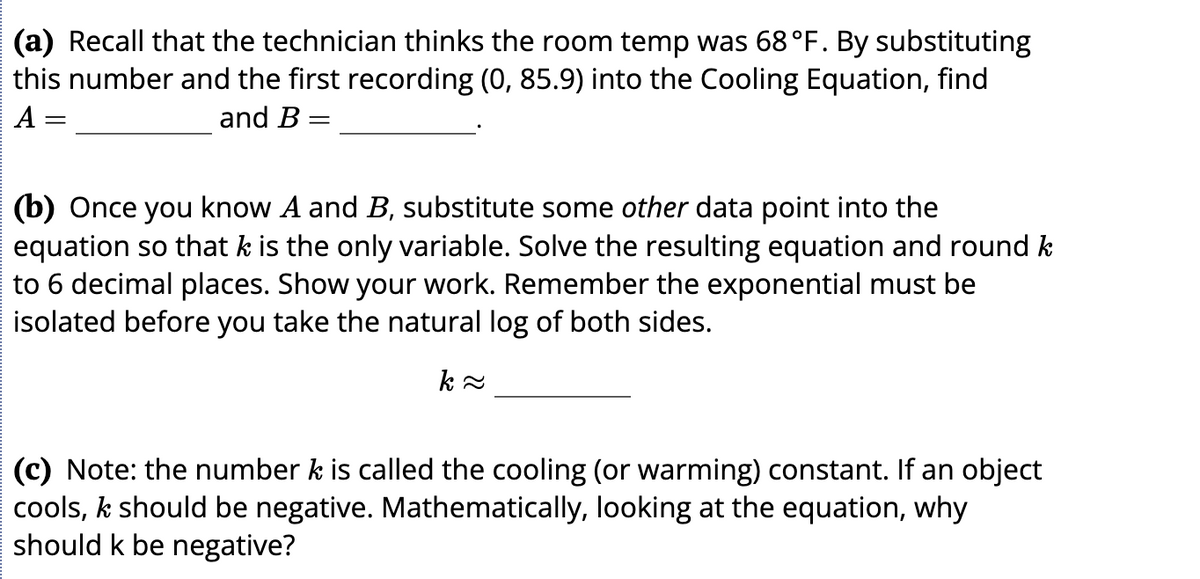The temperature T at a time x of a cooling object follows the function T=A+Be^kx A is the ambient (or room) temperature. B and k are constants that depend on the object. Suppose a forensics technician arrived at a murder scene and recorded the temperature of the surroundings as well as the body. The technician decides it is fair to assume that the room temperature has been holding steady at about 68 °F. A thermometer was placed in the liver of the corpse and the following table of values was recorded. Table 6.5.2. Time and Temperature Actual Time Minutes Elapsed (x) Temperature, ,T, of the Body (°F) 2:00 pm 0 85.90 2:20 pm 20 85.17 2:40 pm 40 84.47 3:00 pm 60 83.78 The key to estimating time of death is to estimate ,A, ,B, ,k, and x in First question: Recall that the technician thinks the room temp was 68 °F. By substituting this number and the first recording (0, 85.9) into the Cooling Equation, find: A: B Second Question: Once you know A and ,B, substitute some other data point into the equation so that k is the only variable. Solve the resulting equation and round k to 6 decimal places. Show your work. Remember the exponential must be isolated before you take the natural log of both sides. Find: k≈ Question three: Note: the number k is called the cooling (or warming) constant. If an object cools, k should be negative. Mathematically, looking at the equation, why should k be negative?
Theorem 6.5.1. Newton's Law of Cooling.
The temperature T at a time x of a cooling object follows the function T=A+Be^kx
A is the ambient (or room) temperature. B and k are constants that depend on the object.
Suppose a forensics technician arrived at a murder scene and recorded the temperature of the surroundings as well as the body. The technician decides it is fair to assume that the room temperature has been holding steady at about 68 °F. A thermometer was placed in the liver of the corpse and the following table of values was recorded.
Table 6.5.2. Time and Temperature
| Actual Time | Minutes Elapsed (x) | Temperature, ,T, of the Body (°F) |
| 2:00 pm | 0 | 85.90 |
| 2:20 pm | 20 | 85.17 |
| 2:40 pm | 40 | 84.47 |
| 3:00 pm | 60 | 83.78 |
The key to estimating time of death is to estimate ,A, ,B, ,k, and x in
First question: Recall that the technician thinks the room temp was 68 °F. By substituting this number and the first recording (0, 85.9) into the Cooling Equation, find:
A:
B
Second Question: Once you know A and ,B, substitute some other data point into the equation so that k is the only variable. Solve the resulting equation and round k to 6 decimal places. Show your work. Remember the exponential must be isolated before you take the natural log of both sides.


Trending now
This is a popular solution!
Step by step
Solved in 3 steps with 3 images


